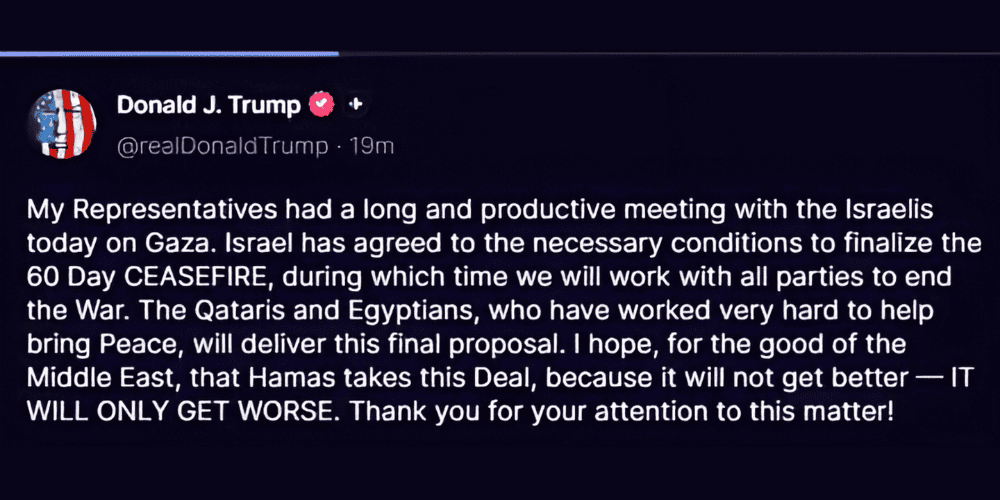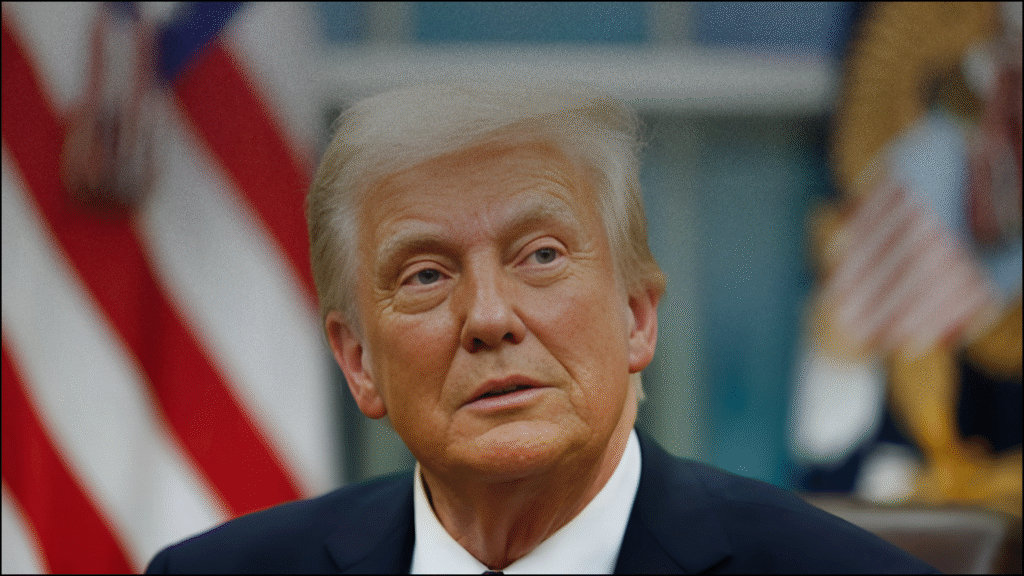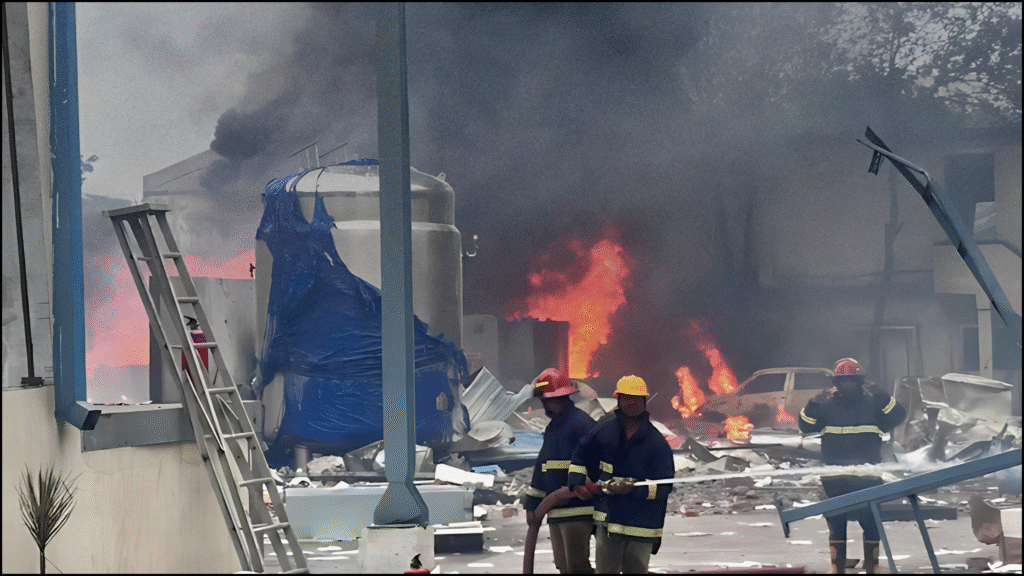On July 2, 2025, US President Donald Trump announced that Israel had agreed to a 60-day ceasefire in Gaza, a move mediated by the United States, Qatar, and Egypt. This development was presented as a step toward de-escalating the ongoing Israel-Palestine conflict, which has claimed countless lives and displaced thousands. However, the announcement was met with skepticism as a senior Hamas official stated that no confirmation of the ceasefire had been received from Israel for four weeks. Adding to the uncertainty, reports indicate that Israeli strikes on Gaza, targeting aid sites, a cafe, and a school, have killed at least 95 Palestinians, raising questions about the feasibility of the ceasefire. This blog explores the complexities of this announcement, the conflicting narratives, and the broader implications for peace in the region.

The Ceasefire Announcement: A Glimmer of Hope?
President Trump’s statement came as a surprise to many, given the entrenched nature of the Israel-Palestine conflict. The proposed 60-day ceasefire, mediated by the US, Qatar, and Egypt, was intended to halt hostilities and create space for humanitarian aid and potential negotiations. The involvement of Qatar and Egypt, both of which have historically played roles in mediating between Israel and Palestinian groups, lent some credibility to the announcement. The US, under Trump’s leadership, has positioned itself as a key player in Middle East diplomacy, often aligning closely with Israel.
The ceasefire was framed as a temporary measure to address the worsening humanitarian crisis in Gaza, where infrastructure has been decimated, and access to basic necessities like food, water, and medical care remains severely limited. According to Reuters, the announcement followed weeks of behind-the-scenes talks, with US officials emphasizing the need for a pause to prevent further escalation. However, the lack of concrete details about the ceasefire’s terms—such as monitoring mechanisms or enforcement—left room for doubt.
Hamas’ Response: A Cloud of Uncertainty
The optimism surrounding Trump’s announcement was short-lived. A senior Hamas official, speaking to Al Jazeera, stated that there had been no communication from Israel confirming the ceasefire for four weeks. This discrepancy highlights the fragile trust between the parties involved. Hamas, which governs Gaza, has been a key player in negotiations but has often clashed with Israel over terms and implementation. The official’s statement suggests either a breakdown in communication or a deliberate misrepresentation, casting doubt on the ceasefire’s viability.
Further complicating matters, reports of Israeli strikes on Gaza aid sites, a cafe, and a school surfaced shortly after the announcement. These attacks, which killed at least 95 Palestinians, were condemned by human rights organizations and Palestinian authorities. The targeting of civilian infrastructure, including aid distribution points, underscores the challenges of implementing a ceasefire in a conflict marked by deep-seated animosity and frequent violations. BBC News noted that such strikes not only exacerbate the humanitarian crisis but also erode trust in diplomatic efforts.
The Humanitarian Toll and Regional Dynamics
The ongoing violence in Gaza has taken a devastating toll. The recent strikes add to a death toll that has climbed steadily over the years, with thousands of civilians caught in the crossfire. Gaza’s already strained healthcare system is struggling to cope with the influx of casualties, and aid organizations face increasing risks in delivering supplies. The United Nations has repeatedly called for an end to attacks on civilian infrastructure, emphasizing that such actions violate international humanitarian law.
The ceasefire announcement must also be viewed in the context of broader regional dynamics. Qatar and Egypt’s involvement reflects their strategic interests in stabilizing the region. Qatar, a key financial backer of Gaza’s reconstruction, seeks to maintain its influence in Palestinian affairs, while Egypt aims to secure its border and prevent spillover violence. The US, meanwhile, is navigating its role as a mediator while balancing its strong alliance with Israel. President Trump’s announcement may also be influenced by domestic political considerations, as he seeks to bolster his administration’s foreign policy credentials.
Challenges to Peace and the Path Forward
The conflicting narratives surrounding the ceasefire highlight the deep mistrust between Israel and Hamas. For a ceasefire to succeed, both sides must agree on clear terms, including mechanisms for monitoring compliance and addressing violations. The recent strikes suggest that Israel may not be fully committed to the ceasefire, or at least not on the terms presented by Trump. This raises questions about the effectiveness of US-led mediation, especially given the lack of transparency in the negotiation process.
Moreover, the humanitarian crisis in Gaza demands urgent attention. The loss of at least 95 lives in the recent strikes underscores the need for safe access to aid and protection for civilians. International organizations like the International Committee of the Red Cross have called for all parties to respect international humanitarian law, which prohibits attacks on civilian infrastructure. Without accountability, the cycle of violence is likely to continue, further destabilizing the region.
Conclusion
The announcement of a 60-day ceasefire in Gaza offered a glimmer of hope for a region ravaged by conflict, but the lack of confirmation from Israel and the continuation of deadly strikes have cast significant doubt on its prospects. The conflicting statements from US and Hamas officials highlight the challenges of brokering peace in a deeply divided region. For the ceasefire to succeed, all parties must commit to transparent communication, adherence to international law, and prioritizing the humanitarian needs of Gaza’s population. As the situation evolves, the international community will be watching closely to see whether this ceasefire can pave the way for lasting peace or become another missed opportunity in the Israel-Palestine conflict.
Sources:
- Reuters
- Al Jazeera
- BBC News
- United Nations
- International Committee of the Red Cross
Stay informed about developments in the Middle East by following reputable news sources and supporting humanitarian efforts in Gaza.




Good information
Pingback: Morgan Stanley Projects India’s GDP Growth at 6.5% for 2025-26 - cutizensbrain